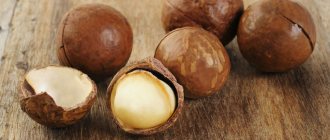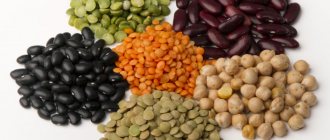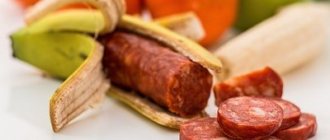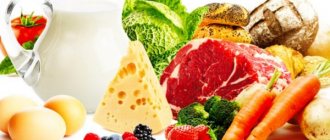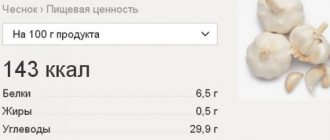Properties of buckwheat
Buckwheat contains a wide range of minerals and a whole storehouse of vitamins, as well as a lot of useful substances:
- 15% of the most important amino acids, the list of which allows this cereal to compete with meat products;
- about 60% carbohydrates, among which there are absolutely no quickly and easily digestible carbohydrates, that is, sugar and glucose;
- 3% fat, of which the main share is occupied by healthy unsaturated fatty acids;
- Among the rich composition of vitamins, the leaders are folic acid, thiamine, vitamin E and niacin acid;
- In terms of mineral content, buckwheat has one of the richest values, it contains a whole range of micro and macroelements - silicon, phosphorus, iron, magnesium, calcium, zinc and others;
- Buckwheat dietary fiber has the ability to speed up metabolic processes and cleanse the digestive system.
A product for all times
Buckwheat is a good equivalent to wheat or oatmeal, which are already boring. It is not only easily accessible, healthy, contains many nutrients, but also has a pleasant nutty taste.
The greatest value of buckwheat lies in the balanced composition of its nutrients and the presence of a large amount of proteins. Based on their content, it can easily replace meat, which is why it is often included in vegetarian dishes and in the diet of athletes.
This noble type of cereal combines two seemingly completely incompatible things: nutritional value and low-calorie content. For people who strictly monitor their lifestyle, health, and nutrition system, buckwheat is an irreplaceable product. Let's find out how many carbohydrates are in buckwheat.
The benefits of boiled buckwheat
This porridge is a good choice for those who not only want to lose weight, but also want to maintain health. Buckwheat contains a lot of dietary fiber. They are very important for anyone who is losing weight. Most often, it is the lack of dietary fiber and protein in our normal diet that causes us to overeat. And the easiest way to satisfy the hunger that has been haunting you since the morning is to have lunch with boiled buckwheat with a piece of some protein food. Chicken breast, tofu, and even a simple egg white or regular omelet will do. Buckwheat is one of the most filling side dishes, which is worth using as long as you are limiting calories.
Buckwheat is an important side dish for diabetics. It has an acceptable glycemic index, does not significantly increase blood sugar levels, and does not require significant insulin secretion. Therefore, it is this porridge that remains on the table when products from more easily digestible cereals are already limited. Calorie content of boiled buckwheat.
Buckwheat is a good source of complex carbohydrates. Many people try to exclude them from their diet, which is not at all correct. Carbohydrates are the simplest and most accessible “fuel” for our body. They are what nature conceived as a way to replenish energy, and not proteins, as some authors of fashionable weight loss diets are trying to sell us. A normal healthy diet, regardless of the goal, should contain about 60% carbohydrates, so a couple of servings of buckwheat porridge per day is quite the norm.
Buckwheat is rich in iron, B vitamins, and also contains zinc and manganese. This allows us to consider it a good product both for those who want to lose weight and optimize their metabolism, and for those who simply maintain their health at the proper level. Sprouted green buckwheat is considered the most “vitamin-rich”, regular buckwheat porridge is slightly inferior to it, and, finally, eating heavily fried buckwheat is not a very profitable option. This porridge may be tasty, but it does not bring significant benefits to the body.
Boiled buckwheat is good for baby food. It allows the growing body to receive all the energy it needs. Buckwheat porridge is often recommended for pregnant women, nursing mothers, and anyone who is preparing to become pregnant. Of course, cereals do not have any magical properties for the reproductive system, but consuming them significantly helps you get more vitamins and minerals from your regular diet.
Buckwheat contains polyunsaturated fatty acids, which are essential for human health. It contains flavonoids, folic acid and many trace elements and vitamins.
| Substance | mg/100 g |
| Vitamin A | 0,006 |
| Vitamin B1 | 0,4 |
| Vitamin B2 | 0,2 |
| Vitamin B6 | 0,4 |
| Vitamin B9 | 31,8 |
| Vitamin E | 6,7 |
| Vitamin PP | 4,2 |
| Iron | 6,7 |
| Calcium | 380 |
| Silicon | 81 |
| Magnesium | 200 |
| Sodium | 3 |
| Sulfur | 88 |
| Phosphorus | 296 |
| Chlorine | 34 |
| mcg/100g | |
| Iodine | 3,3 |
| Cobalt | 3,1 |
| Manganese | 1560 |
| Copper | 640 |
| Molybdenum | 34,4 |
| Nickel | 10,1 |
| Titanium | 30 |
| Fluorine | 23 |
| Chromium | 4 |
| Zinc | 2050 |
History of buckwheat
Buckwheat is produced from the fruits of buckwheat. This plant was cultivated by humans almost four thousand years ago. Scientists believe that it originates from India and Nepal, from where it spread first to Asian countries, and from there to the Arabs and Greeks. Buckwheat came to Europe only in the 12th century. Buckwheat is the most popular in Slavic countries - Russia, Ukraine, Poland. The second region of popularity of healthy cereals is Japan and China. Buckwheat flour is widely used in the USA, Canada, and France.
Triangular “buckwheats” are actually not grains, but fruits. They are similar in properties to rhubarb and sorrel seeds.
Buckwheat satisfies hunger much better than wheat and barley. Scientists believe that this culture could solve the problem of hunger in many regions of the globe.
Buckwheat is a source of valuable substances.
It contains:
- Copper;
- Manganese;
- Phosphorus;
- Rutin;
- Vitamins B2 and B3;
- Iron;
- Amino acids (including lysine);
- Carbohydrates;
- Flavonoids;
- Dietary fiber.
In terms of the amount of dietary fiber, it is ahead of all popular cereals, except rye. 100 grams contain 10 grams of fiber. This is 26% of a person's daily value. The fiber in the seeds helps cleanse the intestines and remove excess bile. Therefore, people who frequently consume buckwheat products are 13% less likely to suffer from gallbladder diseases. Dietary fiber prevents heart failure, breast cancer, and colon cancer.
Doctors recommend including buckwheat in the menu of patients with hypertension, cardiovascular diseases, and people with high cholesterol levels. It is enough to eat 100 grams of buckwheat a day to keep your cholesterol within a healthy range.
The beneficial substances of the product regulate blood sugar levels and prevent the development of diabetes. The latest research shows that three servings of buckwheat porridge per week reduces the risk of diabetes by 20%. Scientists still do not know how some of the substances in the amazing triangular buckwheat fruit work. But these elements have been proven to reduce glucose levels by 19%.
Buckwheat contains lignans in abundance. These are plant phenols that protect the body from heart disease, cleanse the walls of blood vessels, and slow down the progression of atherosclerosis. Buckwheat is especially useful for menopausal women. Scientists advise them to use the product 6 times a week.
The protein level in buckwheat is 14 g per 100 g, which is less than in legume seeds. But in terms of amino acid content, the crop surpasses all grains - wheat, rice, corn, etc.
Buckwheat is an excellent substitute for people who are contraindicated in grains containing gluten, such as wheat, oats, barley.
Vitamins B2 and B3 contribute to healthy hair, nails, and skin.
Iron promotes the production of hemoglobin;
The harmful properties of buckwheat have not yet been identified.
Due to its healing and taste qualities, buckwheat has long been considered a dietary product. Fans of a healthy lifestyle willingly include it in their menu. But won’t frequent consumption of porridge ruin your slim figure? Nutritionists hear the question “how many calories are in buckwheat porridge” very often.
How many calories are in boiled buckwheat?
In its raw form, buckwheat has a fairly high calorie content of 305-315 kcal per 100 g, but during the cooking process the energy value of the dish is significantly reduced. When preparing buckwheat porridge, vegetable and meat broths, milk or just water are used, but in order to count the calories in boiled buckwheat, you must first take into account the energy value and weight of the cereal. From 100 g of dry cereal during the cooking process, 300-320 g of finished porridge is obtained.
Depending on the type of cereal and the method of preparation, the addition of sugar, honey, milk or butter, the calorie content of boiled buckwheat can range from 100 to 135 kcal. The kernels, whole buckwheat grains with an intact structure, have the highest energy value and health benefits; prodel and buckwheat flakes have slightly lower calorie content.
Calculating the energy value of dishes with buckwheat is not at all difficult, taking into account the calorie content and weight of the products added to buckwheat porridge. For example, the calorie content of boiled buckwheat with butter will be about 133 kcal if 5 g of natural butter with an energy value of 660 kcal per 100 g is added to the dish.
Calorie content of all products in one table
Boiled buckwheat and weight loss
Everyone is probably wondering how to cook buckwheat, which will contain about 110 kcal per 100 g of finished product, and not 164 kcal, as in a standard dish. It's simple. Before cooking, a glass of cereal should be poured with boiling water in a ratio of 2 to 1 and left under the lid until the porridge has absorbed all the water. Then add another glass of water to the porridge and boil for 10-15 minutes. The result will be the same “mush”, which contains fewer calories than cereal cooked in the usual way.
For weight loss, the so-called Pugachev style buckwheat is often used. The recipe is attributed to the housekeeper of the Russian singer Alla Pugacheva. Allegedly, the star struggled with weight all her life, and her housekeeper came up with a tasty and quick way to prepare cereal. A glass of buckwheat is placed in a regular thermos and filled with boiling water at the rate of 3 parts water to 1 part cereal. The thermos closes. The next morning, what you get should be eaten without oil and salt in order to save calories and get fullness from your usual food.
True, some people who are losing weight do not speak positively about such porridge. Yes, it is soft and has a “smudge” texture, and contains few calories, but if you read reviews about losing weight with it, failure most often occurs because of its specific taste.
Of course, as many people as there are, there are as many approaches to limiting calorie intake. But if you don’t want to eat something terribly dietary, perhaps you should listen to the voice of reason, and still cook more deliciously.
Moreover, there is nothing wrong with simple boiled buckwheat. But you shouldn’t overestimate buckwheat porridge in terms of its usefulness for weight loss. Buckwheat is usually overrated after reading articles about how it burns fat. In reality, not a single grain burns fat, and success in weight loss will most likely directly depend on the composition, balance and quality of the diet, and not on the presence/absence of buckwheat porridge in it. In addition, diet diversity plays a significant role for modern people.
Since childhood, we have become accustomed to the idea that eating one or two side dishes for a long time is a limitation. Namely, it is the restrictions that most people cannot cope with when going on a diet. In this sense, as well as in relation to simply supplementing some beneficial properties of foods with others, it is better not to have a buckwheat diet “in isolation”, but to have a more balanced diet, with an accessible choice of different cereals.
Losing weight at home. Program
Are there cases when buckwheat is not allowed at all?
The only case when you should not eat buckwheat is individual intolerance, when the protein contained in the cereal is not absorbed or is poorly absorbed. As a rule, intolerance manifests itself in childhood, so buckwheat is introduced carefully into baby’s complementary foods, one teaspoon per day. Buckwheat intolerance in a child is recognized by swelling of the lips and the appearance of a rash.
There is an opinion that buckwheat should not be consumed if:
- diseases of the gastrointestinal tract;
- hypotension;
- chronic diseases of the kidneys and excretory system;
- diabetes
In fact, the ban only applies to overeating buckwheat and constantly including products based on buckwheat flour in the diet. For gastritis, stomach and duodenal ulcers, colitis and other gastrointestinal diseases, buckwheat is included in the therapeutic diet. It is consumed boiled in small quantities.
There are a number of contraindications to the strict buckwheat diet. It is not indicated for adolescents, as well as those who suffer from diseases of the stomach, intestines, cardiovascular system, have metabolic problems or suffer from diabetes. This diet is also prohibited during menopause in women.
Dietary properties of buckwheat
Buckwheat contains a wide range of minerals and a whole storehouse of vitamins, as well as a lot of useful substances:
- 15% of the most important amino acids, the list of which allows this cereal to compete with meat products;
- about 60% carbohydrates, among which there are absolutely no quickly and easily digestible carbohydrates, that is, sugar and glucose;
- 3% fat, of which the main share is occupied by healthy unsaturated fatty acids;
- Among the rich composition of vitamins, the leaders are folic acid, thiamine, vitamin E and niacin acid;
- In terms of mineral content, buckwheat has one of the richest values, it contains a whole range of micro and macroelements - silicon, phosphorus, iron, magnesium, calcium, zinc and others;
- Buckwheat dietary fiber has the ability to speed up metabolic processes and cleanse the digestive system.
Buckwheat diet basics:
One of the simplest mono-diets, the buckwheat diet, contains buckwheat porridge at the heart of the menu. In terms of time, the buckwheat diet is not a short-term diet - its duration is 14 days, but it is the most effective - losing weight by 12 or more kilograms is quite possible. Losing weight will depend on excess weight; the more it is, the faster weight loss will occur.
Buckwheat porridge, prepared according to the buckwheat diet menu, has a calorie content from 70 to 169 kcal. In this sense, buckwheat porridge only creates a feeling of fullness. Therefore, there are no restrictions on the amount of buckwheat porridge eaten per day.
Buckwheat porridge has a high content of calcium, potassium, magnesium and iron, and a high content of vegetable protein (5.93%) and B vitamins reduce possible harm from the diet to the body. Not only will you not feel any significant inconvenience when following a diet, but every day your health will only improve, and a feeling of lightness will appear. This makes it possible to almost completely abandon purely protein (meat, fish) ingredients in the buckwheat diet menu.
- A mandatory requirement of the buckwheat diet is a complete ban on any seasonings, spices, sauces, sugar and even salt.
- The second requirement prohibits eating 4 hours before bedtime - this is an important requirement for successful weight loss on a buckwheat diet.
- During meals, of which there should be six, it is recommended to eat buckwheat steamed in water without oil and salt. You are also allowed to drink a liter of low-fat kefir or a glass of yogurt with a small percentage of fat, two or three green apples. During the day, drink still water, coffee, green tea.
- You can add dried apricots or prunes to buckwheat brewed in boiling water - two or three chopped fruits each.
- You can introduce your body to the buckwheat diet by eating various fruits at this time (excluding bananas, dates, cherries), as well as 30 g of cheese with a fat content of no more than 50%.
- The next diet is similar to the previous one, but is complemented by the fact that you can have steamed buckwheat with cottage cheese (125 g) for breakfast, and for lunch you can enjoy boiled veal and a portion of salad with soy sauce. You can eat three times a day.
A little about calories
The essence of any diet that works to lose extra pounds is simple: if a person usually receives 2000-4000 kcal from food, then this figure needs to be reduced. Exactly how many kilocalories to remove from the diet is decided individually, it depends on:
- from the floor,
- lifestyle,
- type of activity,
- availability of regular additional physical activity.
It is clear that a loader spends more calories than an office worker. Therefore, he simply cannot sharply reduce the nutritional value of food taken during the day - he will not cope with the job. The benefits of fasting are questionable, and lost weight may return, taking with it several more kilograms.
The goal is to reduce the number of kcal consumed to an average of 1200-1400; let your nutritionist calculate exactly how much.
How to say buckwheat
Buckwheat porridge is tasty, healthy and satiates well. The most common way to prepare this cereal is boiling. Boiled buckwheat, if cooked correctly, can turn out crumbly or, conversely, liquid. However, to prepare boiled buckwheat, you must first sort through the dry cereal to get rid of debris. In addition, buckwheat is thoroughly washed under running water to remove any remaining dust and sand, which are present even in the highest quality product.
Boiled buckwheat is always cooked in a certain amount of liquid - be it simple drinking water or rich meat broth. As a rule, for one glass of dry cereal you need to use a liquid whose volume is slightly more than twice that of buckwheat.
You can add a piece of butter, herbs or onions to the finished boiled buckwheat to taste. Many people like sweet boiled buckwheat, to which sugar or honey is added. In addition, boiled buckwheat can become the basis for preparing other tasty and satisfying dishes - for example, all kinds of casseroles and buckwheat cakes.
Buckwheat does not need to be cooked:
- Pour a glass of cereal into a thermos, pour two glasses of boiling water over it and close the thermos with a lid.
- After 30-35 minutes you will receive excellent buckwheat porridge, which contains a maximum of nutrients and a minimum of calories.
Application in medicine
Considering that buckwheat contains a wide range of useful substances, it is successfully used in folk medicine. To prepare medicinal potions, whole, unroasted cereal grains (green), as well as leaves and shoots of buckwheat, are used.
Traditional recipes:
A mixture for stagnation of bile, high sugar, pancreatitis, poisoning. To prepare the composition you will need 15 grams of buckwheat flour and 250 milliliters of low-fat kefir. The first ingredient is obtained by grinding cereals in a coffee grinder, and the second is obtained by fermenting homemade milk. Both products are combined and left in the container overnight. The resulting mixture is eaten for breakfast. The duration of choleretic therapy is 1 month. After 30 days the course is repeated.- A remedy for anemia, chronic fatigue, weakness. Before creating the potion, the cereal is washed and then dried in a frying pan. After this, the kernel is ground in a coffee grinder. Buckwheat flour is taken 30 grams 4 times a day, in between meals.
To enhance the therapeutic effect, the powder is washed down with warm milk. Use the product for at least 30 days (until the condition improves). If necessary, after a month's break the course is repeated.
- Buckwheat jelly to strengthen the cardiovascular system and prevent atherosclerosis. The composition of the healing product includes 45-50 grams of cereal (pre-crushed in a coffee grinder) and 250 milliliters of water. Combine these ingredients and mix thoroughly. After this, the mixture is poured in a thin stream into a liter of boiling water. The jelly is simmered over low heat for 10 minutes. Take buckwheat mixture 3 times a day, 200 milliliters.
- Healing ointment for abscesses, boils, and difficult-to-heal wounds. Crushed buckwheat (45 grams) is combined with a decoction of celandine (50 milliliters). The healing mixture is applied to the affected area three times a day for 10 minutes.
- Buckwheat sprouts for healing the body. The grain is rinsed with clean water and then placed on damp gauze. The container with the raw materials is placed on the windowsill. Considering that green buckwheat secretes a lot of mucus, the fabric and cereal are washed daily with water. With proper care, seedlings appear on the 2nd day. For medicinal purposes, slightly “hatched” grain (1-4 millimeters) is used [8].
Remember, the length of the sprouts should not exceed 1 centimeter.
Indications for use: anemia, obesity, vitamin deficiency, inflammation of the gallbladder, arthritis, pathologies of the organs of vision, atherosclerosis, coronary heart disease, varicose veins [9].
- Powder for babies. The crushed buckwheat kernels are sifted through a fine sieve. The resulting powder is used for the prevention and treatment of diaper rash in children (in the absence of lycopodium).
Recipes and their calorie content
| Name | Recipe | Calorie content, kcal per 100 g |
| Buckwheat porridge with water without oil |
| From 87 to 110. The exact information can be found on the product packaging, since calorie content varies slightly between different manufacturers. |
| Buckwheat porridge on water with added butter and sugar | Buckwheat is cooked in the usual way. At the end of cooking, add 10 grams of butter and 10 grams of sugar per 150 grams of the finished dish. | Approximately 120, depending on the fat content of the oil and the quality of the buckwheat. |
| Buckwheat porridge with milk | The dish is prepared in the same way as buckwheat in water. Milk is used instead of water. | From 140 to 160, depending on the fat content of the milk and the quality of the cereal. |
| Buckwheat porridge with meat | Compound:
Chop onions and carrots, fry them in vegetable oil. Next, fry the minced meat, add buckwheat. Pour water over everything and simmer until done. | On average - 315. |
Diet recipes
Application in cosmetology
Buckwheat, along with improving the health of the body, has a beneficial effect on the skin (nourishes, rejuvenates, cleanses, normalizes cellular metabolism). Due to the content of vitamins, phytohormones, organic acids and fats, the cereal is actively used in professional cosmetics, as well as for the preparation of homemade masks, creams and scrubs. Homemade mixtures with buckwheat are ideal for caring for combination, normal and sensitive skin.
Cereal based home remedies:
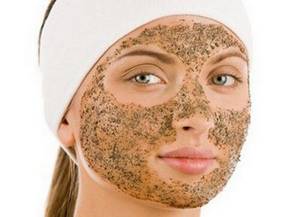
Nourishing mask for dry and normal skin. Ingredients: 30-60 grams of buckwheat flour, 20 milliliters of olive oil. The mask is applied to previously cleansed, damp skin of the face, neck and décolleté for 20-30 minutes. After completing the procedure, the mixture is washed off with warm water.- Toning mask for oily and combination skin. Method of preparation: mix grated carrots (1 piece), 30 grams of buckwheat flour, 2 milliliters of lemon juice. Apply the paste mixture to the dermis for 20 minutes, rinse.
With regular use of the composition (three times a week), the complexion improves, the capillaries are strengthened, and the oily sheen disappears.
- Film mask for problematic and sensitive skin. To prepare the product you will need 100 milliliters of chamomile infusion. 15 grams of edible gelatin and 20 grams of buckwheat flour are dissolved in it. The prepared mixture is heated to 70 degrees and then cooled. After this, add 15 milliliters of fresh aloe juice (or cucumber) to the mask. Leave the mixture on your face for 20 minutes and then carefully remove it with your hands. A film mask is used to cleanse and narrow pores, reduce acne, activate blood circulation, and deeply moisturize the dermis. It is suitable for all skin types.
- Mask against rosacea. Active ingredients: buckwheat flour (15 grams), one chicken yolk, honey (5 milliliters). The ingredients are thoroughly mixed and applied to the dermis in a thin layer. After 15 minutes, the mixture is washed off. The mask has a capillary-protective, anti-inflammatory and strengthening effect on the skin.
- Compresses for eyes against swelling. Buckwheat is pre-crushed and distributed into two gauze bags. Before use, immerse them in hot water for 4 minutes (to steam), then cool. After this, apply compresses to your eyelids for 15 minutes.
This mask is used to eliminate puffiness under the eyes, smooth out fine wrinkles, and deeply nourish the dermis.
- Body Scrub. Buckwheat flour (15 grams), coffee grounds (15 grams), mint or chamomile infusion (100 milliliters) are combined and stirred thoroughly. The mixture is applied to a washed body, intensively massaging problem areas.
The scrub perfectly removes dead skin cells of the epidermis, cleanses and tones the skin, and reduces the severity of cellulite.
- Nourishing hair mask. To create the mixture, prepare: 30 grams of buckwheat flour, 100 milliliters of warm homemade milk, 1 egg, 10 milliliters of honey. The composition is mixed and applied to clean hair for 30-40 minutes. After the specified time, wash off the mask with hot water and shampoo. The product nourishes and strengthens thin and unruly hair.
To enhance the cosmetic effect, after completing the procedures, a nourishing cream is applied to the skin.
Harm of boiled buckwheat
Buckwheat itself is limited in some diseases of the gastrointestinal tract in the acute phase, and diseases of the pancreas. They don’t eat porridge immediately after abdominal operations, but this is all particular. In ordinary daily practice, the most harmful are two ways of “consuming buckwheat”, which we most often encounter in everyday life:
- Eating only cereal without a hint of sources of protein and healthy fats in the hope of losing weight;
- Consuming buckwheat with a large number of sauces and gravies, which change the nutritional value of the finished dish and greatly contribute to weight gain.
In both cases, the actual result turns out to be significantly different from the goal. In the first, instead of losing weight, a person will experience loss of muscle mass, hormonal problems and “inhibited” reactions of the nervous system. And in the second, healthy porridge is consumed in kilograms, well, or in slightly smaller portions, but weight loss still does not occur. Therefore, when trying to benefit from buckwheat, you should still adhere to reasonable moderation.
Buckwheat “half-steamed with water” for a mono-diet is quite harmful for people with diseases of the pancreas and digestive organs. With such problems, in principle, you should consult a doctor before losing weight on some home-grown nutrition system.
The benefits and harms of green buckwheat


